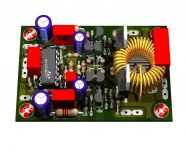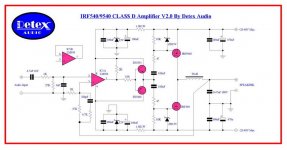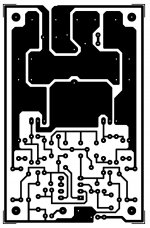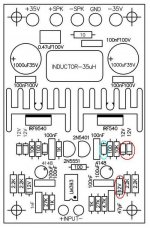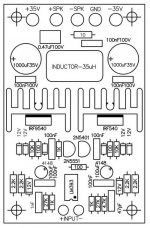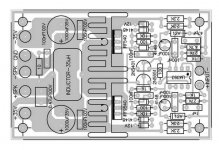szhighstar
New member
MPP (Molypermalloy Powder Cores)
Composition: Mo-Ni-Fe
MPP cores has the lowest overall core loss and best temperature stability. Typically, inductance variance is under 1% up to 140 deg C. MPP cores are available in initial permeabilities (µi) of 26, 60, 125, 160, 173, 200, and 550. MPP offers high resistivity, low hysteresis and eddy current losses, and very good inductance stability under DC bias and AC conditions. Under AC excitation, inductance change is under 2% (very stable) for µi=125 cores at AC flux density of over 2000 gauss. It does not saturate easily at high DC magnetization or DC bias condition.The saturation flux density of MPP core is approximately 8000 gauss ( 800 mT)
Compared to other materials, MPP cores are the costliest, but highest quality in terms of core loss and stability. For application involving DC bias condition, use the following guidelines. To get less than 20% decrease in initial permeability under DC bias condition:- For µi= 60 cores, max. DC bias < 50 oersted; µi=125, max. DC bias < 30 oersted; µi=160, max. DC bias <20 oersted.
Unique Features:
1. Lowest core loss among all the powder materials. Low hysteristics loss resulting in low signal distortion and low residual loss.
2. Best temperature stability. Under 1%.
3. The maximum saturation flux density is 8000 gauss (0.8 tesla)
4. Inductance tolerance: + - 8%. (3% from 500 Hz to 200 Khz)
5. Most commonly used in aerospace, military, medical and high temperature application.
6. Most readily available as comapred to high flux and sendust.
Applications :
High Q filters, loading coils, resonant circuits, RFI filters for frequencies below 300 kHz, transformers, chokes, differential mode filters, and DC biased output filters.
Composition: Mo-Ni-Fe
MPP cores has the lowest overall core loss and best temperature stability. Typically, inductance variance is under 1% up to 140 deg C. MPP cores are available in initial permeabilities (µi) of 26, 60, 125, 160, 173, 200, and 550. MPP offers high resistivity, low hysteresis and eddy current losses, and very good inductance stability under DC bias and AC conditions. Under AC excitation, inductance change is under 2% (very stable) for µi=125 cores at AC flux density of over 2000 gauss. It does not saturate easily at high DC magnetization or DC bias condition.The saturation flux density of MPP core is approximately 8000 gauss ( 800 mT)
Compared to other materials, MPP cores are the costliest, but highest quality in terms of core loss and stability. For application involving DC bias condition, use the following guidelines. To get less than 20% decrease in initial permeability under DC bias condition:- For µi= 60 cores, max. DC bias < 50 oersted; µi=125, max. DC bias < 30 oersted; µi=160, max. DC bias <20 oersted.
Unique Features:
1. Lowest core loss among all the powder materials. Low hysteristics loss resulting in low signal distortion and low residual loss.
2. Best temperature stability. Under 1%.
3. The maximum saturation flux density is 8000 gauss (0.8 tesla)
4. Inductance tolerance: + - 8%. (3% from 500 Hz to 200 Khz)
5. Most commonly used in aerospace, military, medical and high temperature application.
6. Most readily available as comapred to high flux and sendust.
Applications :
High Q filters, loading coils, resonant circuits, RFI filters for frequencies below 300 kHz, transformers, chokes, differential mode filters, and DC biased output filters.

